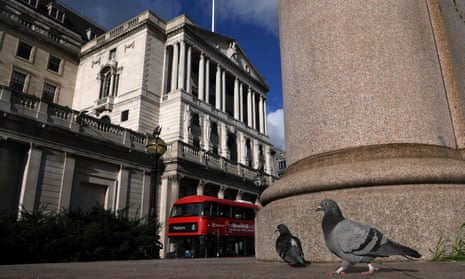The UK’s largest banks are no longer “too big to fail” and could foot the bill for their own failures, the Bank of England has said, but it found shortcomings at three banks including HSBC and Lloyds.
Fourteen years on from the financial crisis that threatened a collapse of the banking system and led to huge taxpayer bailouts, the Bank of England’s first public assessment of lenders’ “living wills” found that even if a major UK lender were to collapse, customers would be able to access their accounts, and banks could broadly provide services as normal.
It also determined that shareholders and investors rather than taxpayers would be first in line to cover banks’ losses and ensure they had enough capital to operate.
However, the Bank cautioned that there were “still further improvements to be made” by some of the largest banks to avoid the chaos that ensued after the 2008 financial crisis, which forced the UK government to spend £137bn of taxpayer money to stabilise the banking system.
It said three lenders – HSBC, Lloyds and Standard Chartered – had to address shortcomings that could otherwise “complicate unnecessarily” their ability to fail safely. Each of the three lenders was found to either not have adequate financial resources, or proper data and measurements of them, in place to ensure they can absorb losses without putting public money at risk.
Concerns were also raised over whether HSBC could properly restructure the business in a way that would ensure services were still being provided while authorities helped wind down the lender. Standard Chartered was also singled out for failing to identify all the restructuring options available to it.
Lloyds said it was already working on improving its ability to forecast and measure its financial resources, and HSBC said it was working with regulators to address the Bank of England’s concerns. Standard Chartered said it had put aside dedicated funding to make sure it was prepared for an orderly wind-down, saying this work was a “priority” for the bank.
The lenders will have until 2024 – when the next assessment takes place – to address the shortfalls. The assessment covered eight high street banks in total, including Barclays, Nationwide, NatWest, Santander UK and Virgin Money UK.
Dave Ramsden, a Bank of England deputy governor, said the exercise was a core part of the UK’s response to the global financial crisis and “demonstrates how the UK has overcome the problem of ‘too big to fail’.”
He said: “Major UK banks will need to address the outstanding actions identified as part of the Bank’s assessment and keep their preparations ready, tested over time, and be confident in their use should the need arise.”
The process is part of the UK’s efforts to prevent similar problems that led to the banking crisis of 2007-2008, when the threat of a series of bank failures forced western governments to spend billions of pounds to keep lenders from collapsing, and sending the global economy into freefall.
The crisis gained pace after Lehman Brothers was allowed to fail in September 2008, having run out of cash to pay its bills when banks stopped lending money to each other. The subsequent panic sparked the worst global recession since before the second world war.
The US was forced to find a buyer for the brokerage Bear Stearns, while the UK government nationalised Northern Rock and spent £45bn and £20.3bn of taxpayer cash to bail out Royal Bank of Scotland and Lloyds respectively.
“In 2007–08, the UK did not have such a resolution regime and instead this left two choices when some banks got into trouble: let banks fail and cause huge disruption, or bail them out with taxpayers’ money,” Ramsden said.
However, he admitted that “no matter how much preparation is done, resolution is always likely to be complex to execute. Maintaining a credible and effective resolution regime that is fit and ready for use is a continuous process.”
